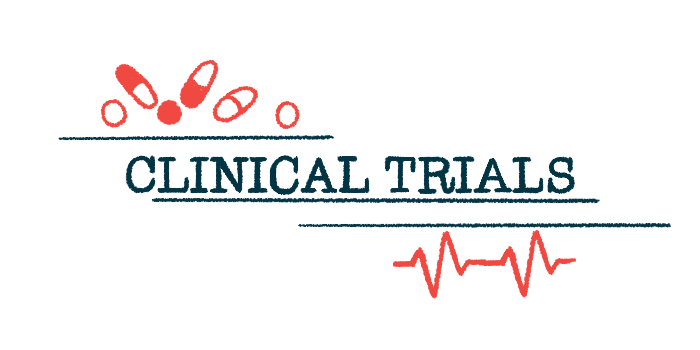New Trial Data: ST-920 Gene Therapy Effective, Well-tolerated in Fabry
Treatment shown to maintain alpha-GalA activity up to 15 months
Written by |

Gene therapy ST-920 (isaralgagene civaparvovec) continues to be effective and well-tolerated in adults with Fabry disease, according to the latest data from an ongoing Phase 1/2 clinical trial that’s testing the experimental treatment.
Five of the participants treated with ST-920 the longest — up to 15 months, or just longer than one year — had elevated levels of alpha-GalA, the enzyme faulty in those with Fabry, the new data showed. A sixth patient had normalized alpha-GalA activity two weeks post-dosing.
These data, as of the Feb. 14 cutoff date, illustrate an increase in alpha-GalA activity between three and 17 times above the mean of the normal range, Sangamo Therapeutics, ST-920’s developer, reported in a press release.
Based on findings to date, the company is planning a Phase 3 clinical trial.
So far, one enrolled patient had discontinued standard alpha-GalA enzyme replacement therapy (ERT) and maintained significantly elevated levels of alpha-GalA activity for at least three months. Since the cutoff date, four more patients have stopped ERT, and an additional five have been dosed.
“These updated preliminary results continue to demonstrate the potential of [ST-920] gene therapy to safely address the most challenging symptoms of Fabry disease,” said Jaya Ganesh, MD, of the Icahn School of Medicine at Mount Sinai and trial investigator.
“I am excited to see whether these encouraging trends continue into the next dose cohort and beyond, as we progress this potential treatment for a very challenging illness,” Ganesh added.
Testing ST-920 in trial
ST-920 is designed to deliver a healthy copy of the GLA gene that encodes for alpha-GalA. Fabry-causing GLA mutations result in a defective alpha-GalA enzyme, leading to the buildup of the fatty molecules Gb3 and lyso-Gb3 in cells. That toxic accumulation gives rise to the disease’s symptoms, which include distinctive facial features, eye problems, and episodes of severe pain and tingling in the hands and feet.
While ERT is the standard treatment for Fabry, and provides functional alpha-GalA to patients, it requires long-term infusions to maintain enzyme levels.
The Phase 1/2 trial, called STAAR (NCT04046224), is still recruiting participants. It seeks to enroll up to 48 adults, ages 18 and up, at sites in the U.K. and the U.S.
The study includes Fabry patients who are receiving ERT, have stopped ERT for at least six months, or have yet to use this treatment — called ERT-naïve.
A recent update of trial results showed all five patients treated the longest had maintained elevated alpha-GalA activity levels for at least a year. Among them, two received the lowest dose of 5 trillion vector genomes per kg of body weight (vg/kg), while two received a medium dose of 10 trillion vg/kg. The fifth participant was treated with a higher dose, of 30 trillion vg/kg.
The new results were presented at the Society for the Study of Inborn Errors of Metabolism (SSIEM) Annual Meeting, being held Aug. 30 to Sept. 2 in Freiburg, Germany. The updated data included the sixth participant, given the higher dose, with results for up to 15 months.
As of that 15-month mark, one of the low dose recipients, who was still on ERT as of the cutoff date, had 12.4 times higher alpha-GalA activity than the normal mean, while the other, who was not on ERT, showed a 2.7 times increase in enzyme activity.
The first patient in the medium dose group, not on ERT, showed a 3.5 times increase in alpha-GalA activity at 48 weeks, or one year. This individual had the highest levels of lyso-Gb3 before treatment but showed a 40% reduction within 10 weeks of dosing, which was sustained through 48 weeks.
The second medium dose patient also was on ERT at the beginning of the study, but stopped at week 24, or about 6 months. This patient had enzyme activity 10.3 times higher at week 36, or about nine months, which had been maintained since late last year. Researchers noted that this individual demonstrated a moderate increase in lyso-Gb3 levels after ERT withdrawal.
The first higher dose patient, on ERT at cutoff, had 16.7 times more alpha-GalA activity than the mean normal at week 16 (four months), while the sixth participant, also still on ERT as of the cutoff date, showed a normal range of enzyme activity.
Improvement in symptoms
Three patients reported improvements in their symptoms, including the ability to sweat — not being able to do so is a common Fabry symptom. No progression in Fabry-related heart muscle disease was seen in those who showed signs before treatment.
Since the cutoff date, one participant received the 30 trillion vg/kg dose, and four were given the even higher dose of 50 trillion vg/kg. Screening of several additional participants, both male and female, is ongoing.
Of the five treated patients who began STAAR’s dose escalation phase on ERT, four have stopped ERT since the cutoff date. ERT withdrawal is complete for each of these individuals.
ST-920 was generally well-tolerated across three dose groups in the six treated patients, with mild adverse events reported and no treatment-related serious adverse events. On-demand or preventative steroid treatment for elevated liver enzymes was not needed.
According to Sangamo, additional STAAR results will be released in the second half of this year.
“We are excited by the strong progress of our wholly owned Fabry program, which we believe places us in a leading position to offer patients a compelling potential therapy for their underlying disease,” said Nathalie Dubois-Stringfellow, Ph.D, Sangamo’s senior vice president and chief development officer.
“We look forward to sharing an update on the additional patients dosed and continue to actively prepare for a potential Phase 3 trial,” Dubois-Stringfellow said.







